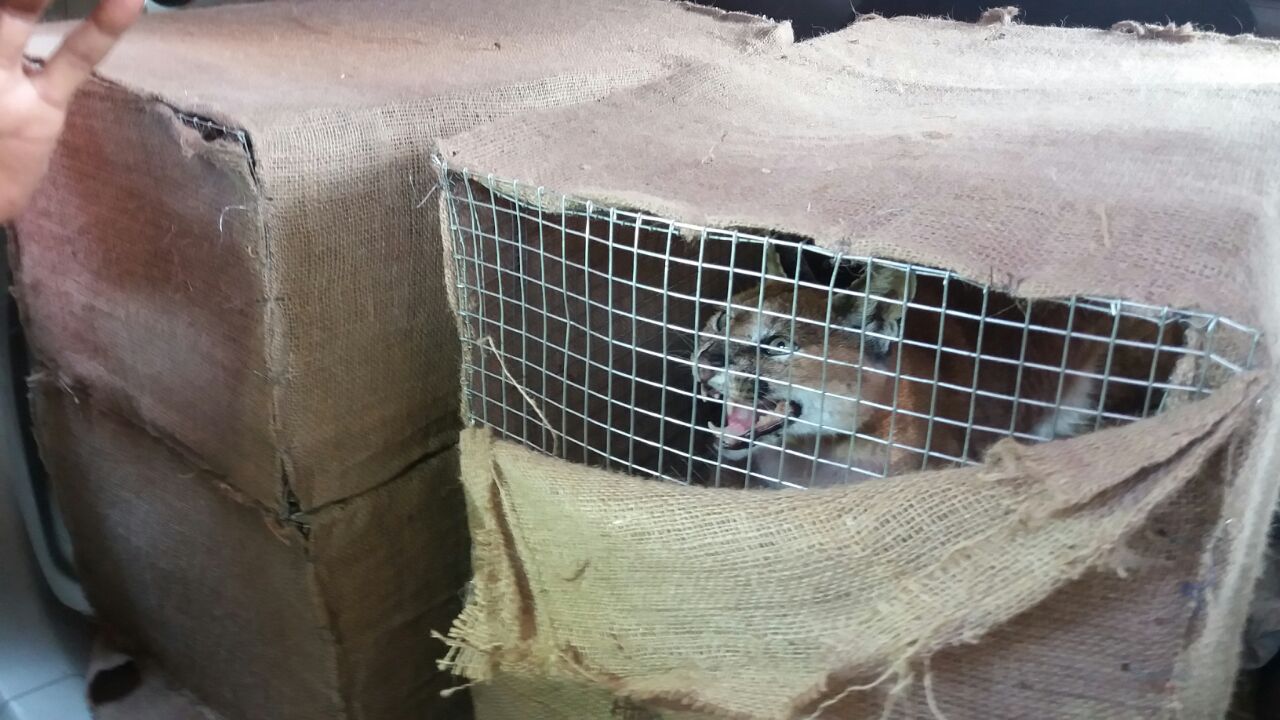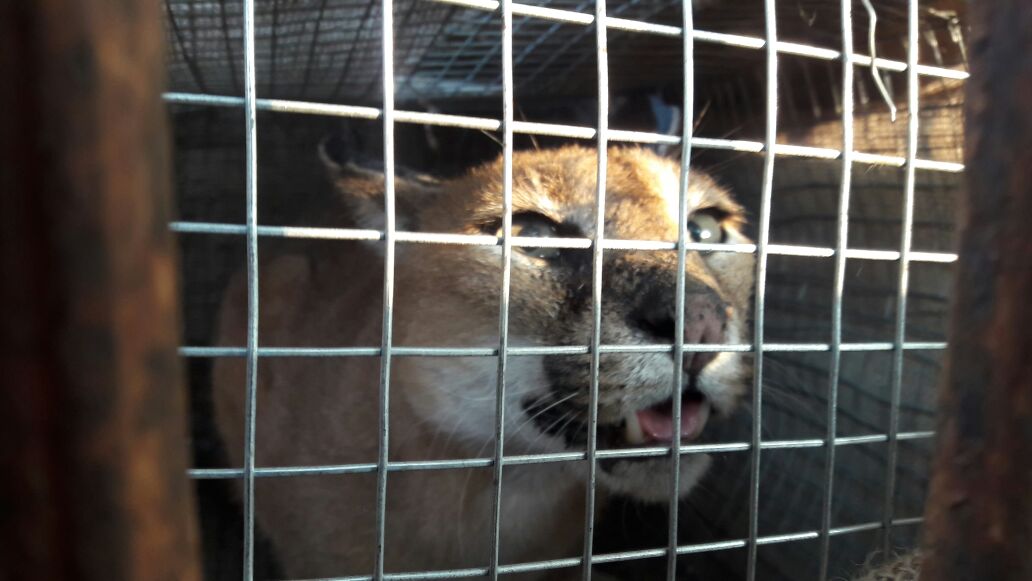Sanctuary Asia | 9th January, 2016 | http://www.sanctuaryasia.com/conservation/news/10515-five-caracals-seized-from-wildlife-traders-in-uttar-pradesh
The Mirzapur Forest Department apprehended three wildlife traders, who were caught with six wild cats in their possession. From the six animals rescued, one has been identified as a leopard, while the other five belong to an elusive species of wild cat called the caracal.

Photo: Anupam/Dainik Jagran.
On January 9, 2016, the Mirzapur Forest Department apprehended three wildlife traders who were caught with six wild cats in their possession. Of the three accused, one was taken into custody while the other two escaped and are now absconding.
The accused were travelling in an Innova car and were intercepted by the Forest Department officials. Upon inspection, cages covered with clothes were found in the vehicle. “The vehicle along with its number plate had been intentionally covered in mud to avoid detection,” said K. K. Pandey, DFO, Mirzapur. One of the accused, who is now in police custody, is from Hyderabad . “As per the accused’s confession, the animals had been delivered to him in Bihar. We are also looking at the possibility of a Hyderabad connection in the case,” added Pandey.
While the search for the absconding smugglers continues, the police has already filed a case under the Wild Life (Protection) Act, 1972 , in order to present the accused to the court. From the six animals rescued, one has been identified as a leopard, while the other five were identified as caracals.
"Though it hasn't been ascertained if the animals were poached from Mirzapur, it is a possibility as there is historical evidence of the presence of caracals in the district," said Debadityo Sinha of the Vindhyan Ecology and Natural History Foundation.

Photo: Anupam/Dainik Jagran.
The caracal is protected under Schedule I of Wild Life (Protection) Act, 1972. Though placed under the ‘Least Concern’ category on the IUCN Red List, the species is considered endangered in India. Found in the drier regions of the country, they have been sighted in parts of Rajasthan, Gujarat, Maharashtra and Madhya Pradesh. This species is easily recognisable by its unique black, tufted ears.